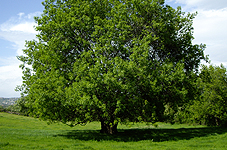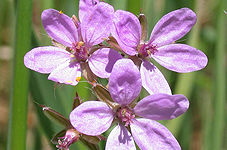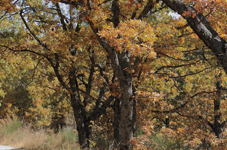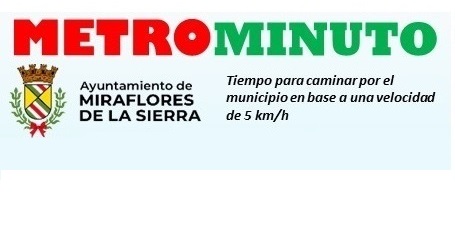Flora
 |
 |
 |
|
Definition. Natural environment.
|
Rebollo or Melojo (Quercus Pyrenaica) |
Since ancient times the places that surround Miraflores have suffered a strong Antropomorfización Due to the activity both agricultural and livestock, which has resulted in large areas to a landscape adehesado and land of work that little by little, over the years and the gradual abandonment of both activities, has been reverting to its state Primigeneo, not without preserving today excellent samples of Adehesadas farms mainly from Fresno (Fraxinus angustifolia), with oak-stained Rebollo (Quercus Pyrenaica).
The Tree Mass De Miraflores de la Sierra is clearly differentiated following a altitudinal cut. On the mountain ramp we find large extensions of Adehesadas cattle ranches with Holm oak (Quercus Ilex) As main species and Rebolls (Quercus Pyrenaica) and junipers of La Miera (Juniperus Oxycedrus) as punctual companions. As we go up and the humidity is rising we find small maple stands of Mompelier (Maple Mompesulanum) which are mixed with oaks, Holm Oaks and junipers, together with Alders (Alnus Glutinosa) and Willows Caprunos (Salix Caprea) in Riverside areas. More Exporádicamente We also found specimens of Majuelos (Crataegus Monogyna), Wild cherry trees (Prunus Avium) and Mostajos (Sorbus ARIA). At the height of the village we find both large masses of rebollos in the Montes de la Raya, Monte Aguirre and skirts of the Pico de la Pala, as excellent adehesadas masses of Holm Oaks in the southeastern part of the hull with the public Mount La Dehesilla as Great Example of these. Finally, after the robledal we find a mass of wild pine (Pinus Sylvestris) of repopulation that occupies the entire hillside of Monte Aguirre and of the line to the area of piornal. In it we can find loose specimens of pine Resino (Pinus Pinaster), Laricio (Pinus Nigra) and different Cedars (Cedrus Atlantica And Cedrus Deodara, as well as isolated feet of rowan from the Hunters (Sorbus Aucuparia) in areas of Umbria along the water channels.
As for the shrub substrate and climbing plants is represented by Blackthorns (Prunus Spinosa), Escaramujos or Rosal Silvestre (Canine pink), Blackberry (Rubus Ulmiformis), Madrelva (Lonicera Etruscan and Implexa), Broom (Cytisus Scoparius and broom Sphaerocarpa) and Ivy (Hedera Helix), among others.
The Aromatic plants and other xerophyte species (Low needs Hidrícas) are mainly represented by the Jara sticky (Cistus Ladanifer) And Jara of laurel leaves (Citus Laurifolius), The Torvisco (Daphne Gnidium), The common Heath or heather (Calluna Vulgaris), The White Heath (Erica Arborea), The rosemary (Rosmarinus Oficinalis), The Santolina or Abrótano female (Santolina Chamaecyparissus), The Marjoram (Thymus Mastichina), Thyme Salsero (Thymus Zygis) and the Lavender(Lavandula Stoechas), among others.





